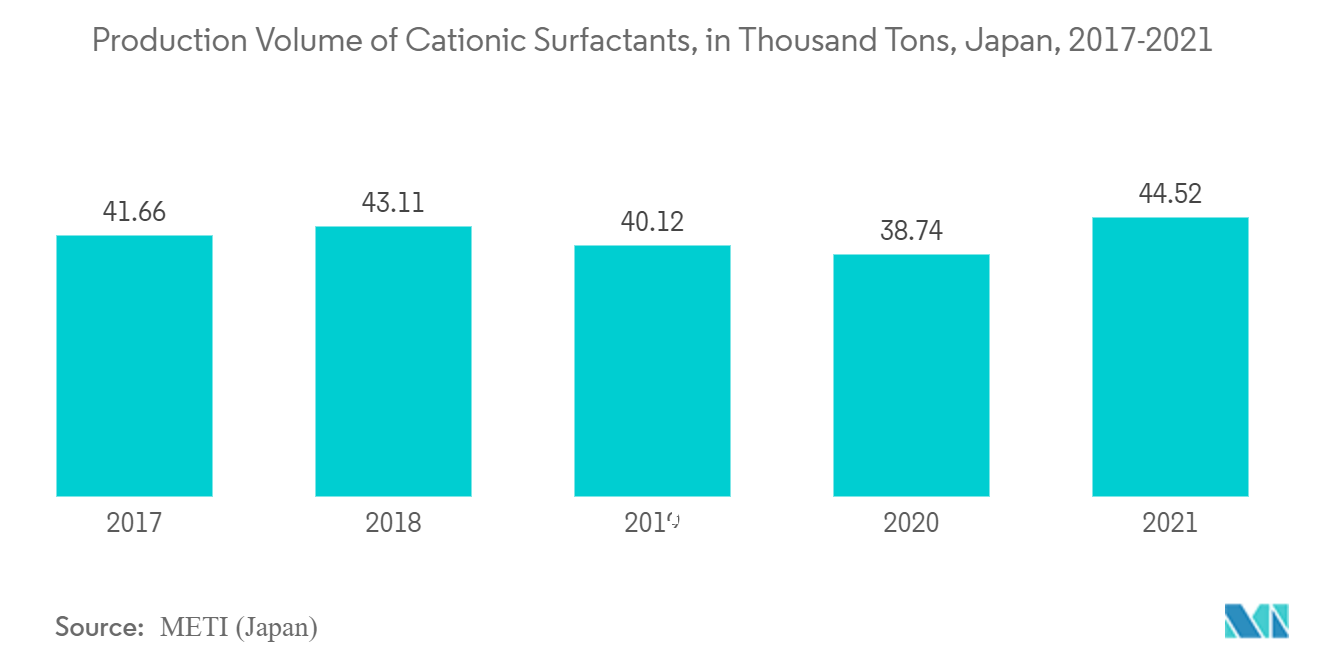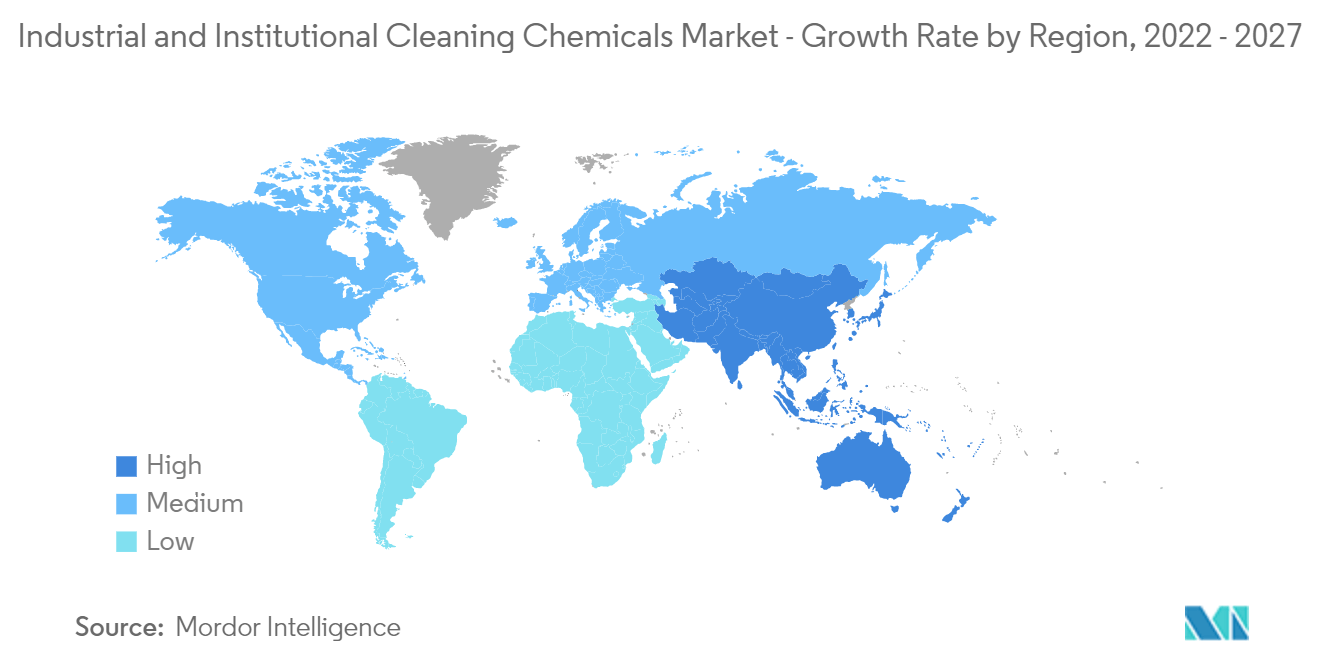Market Trends of Industrial and Institutional Cleaning Chemicals Industry
Increasing Demand for General Purpose Cleaning Products
- The general purpose cleaning products are the largest industrial and institutional cleaning chemicals market segment. The products in this segment are mainly used as ware-wash, floor cleaners, etc., at hospitals, hotels, and offices.
- Most chemicals used in industrial and institutional cleaning are biocides and surfactants.
- Japan is one of the largest producers of industrial cleaning chemicals due to the availability of raw materials and labor. As per the Ministry of Economy, Trade and Industry, the volume of cationic surfactants produced in Japan's chemical sector increased by 5,800 tons (+14.97%) over the previous year. As a result, Japan's output quantity peaked in 2021 at 44,520 tonnes.
- As cleanliness is a factor that has the highest importance in hospitals and healthcare, the growth of the healthcare industry and the increasing number of new hospitals play a major role in the growth of the cleaning chemicals market.
- Considering India, there were 157,819 functional sub-centers (SCs), 30,579 primary health centers (PHCs), and 5,951 community health centers (CHCs) in 2021. Of these 156,101 SCs, 25,140 PHCs and 5,481 CHCs were situated in rural areas. Over the years, several PHCs have been upgraded to the level of CHCs in many states, the report states.
- According to the National Bureau of Statistics of China, the number of hospitals in China reached 36,570 in 2021 and registered growth when compared to 35,394 in 2020.

North America to Dominate the Market
- The North American region dominates the global market share. The increasing hospital construction and high awareness among the population regarding the importance of a hygienic environment are some of the factors driving the growth of the regional industrial and institutional cleaning chemicals market.
- Canada is among the fastest-growing countries in the North America Region, along with the United States and Mexico. As per StatCan, the number of hospital establishments in Canada reached 13,000 as of 2021.
- Furthermore, industrial and institutional cleaning chemicals are also part of the laundry care segment. The revenue of the United States laundry care segment was valued at USD 14.55 billion in 2021 and is expected to grow in the forecast period.
- The food and beverage processing industry is one of the major end-user industries of industrial chemicals. Mexico is expected to grow over the forecast period due to the rising trend of eating packaged food, increased standards of living, coupled with increased spending power.
- The car washes segment stands to be one of the important segments in this market, with the availability of a wide range of products related to cleaning chemicals. The cleaning products are used by both OEMs for use in new vehicles, and after-market for washing vehicles on road. With a rising focus on car care and maintenance, the demand for car washing products has also been increasing in the region.
- The demand for automobiles has been increasing over the past few years, positively affecting industrial and institutional cleaning chemicals growth. As per OICA, the United States' total automotive production reached 9,167,214 units in 2021 and registered a growth of 4% when compared to 8,821,026 units in 2020.

